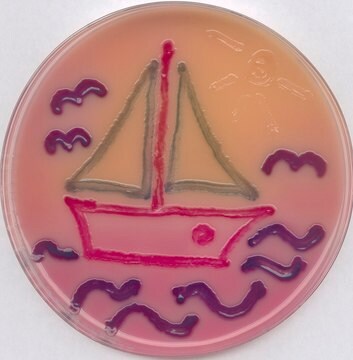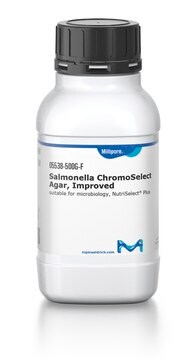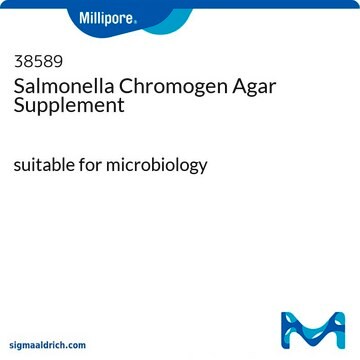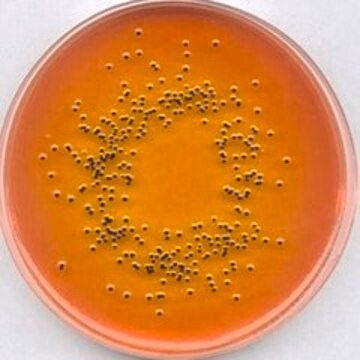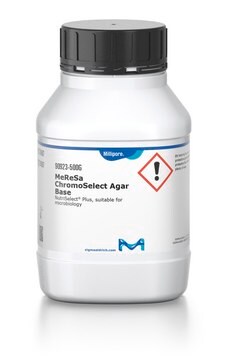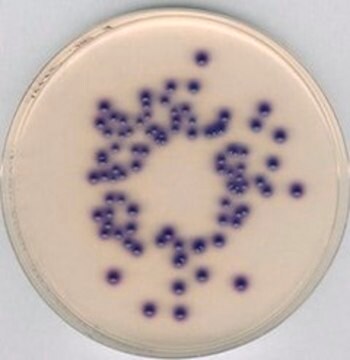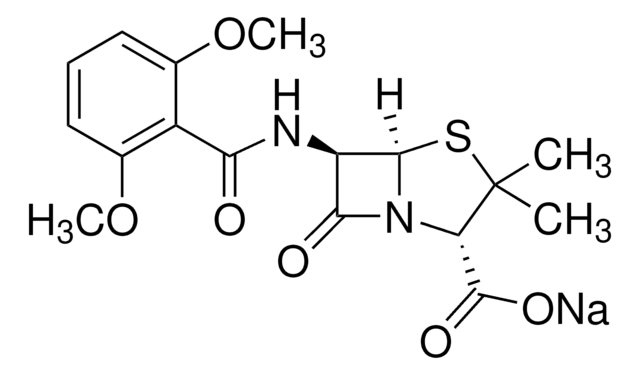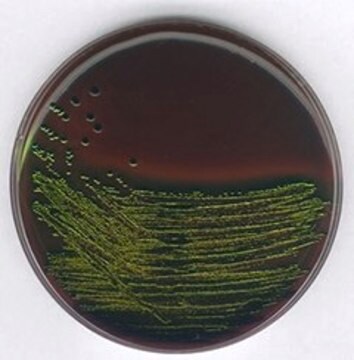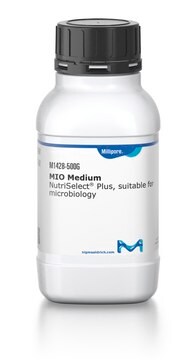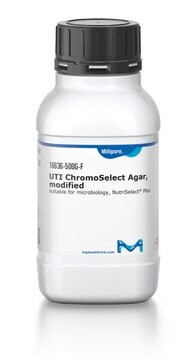84369
Salmonella Chromogen Agar
suitable for microbiology, NutriSelect® Basic, 100188 to be used as a replacement item. Search to explore!
About This Item
Produits recommandés
Niveau de qualité
Stérilité
non-sterile
Forme
powder
Durée de conservation
limited shelf life, expiry date on the label
Composition
agar, 15 g/L
meat extract, 1 g/L
peptone, 5 g/L
sodium chloride, 5 g/L
sodium deoxycholate, 1 g/L
yeast extract, 2 g/L
Fabricant/nom de marque
NutriSelect® Basic
pH final
7.3±0.2 (25 °C)
Application(s)
clinical testing
environmental
food and beverages
microbiology
Température de stockage
2-8°C
Adéquation
selective and differential for Escherichia coli
selective and differential for Klebsiella spp.
selective and differential for Proteus spp.
selective and differential for Salmonella spp.
selective and differential for Shigella spp.
selective and differential for coliforms
selective and differential for enterobacteriaceae
Application
Notes préparatoires
Autres remarques
Note de bas de page
The designations basic, plus, or prime are added to indicate the quality control level, from basic quality control to standard QC plus to prime for full regulatory compliance.
Informations légales
Code de la classe de stockage
11 - Combustible Solids
Classe de danger pour l'eau (WGK)
WGK 3
Point d'éclair (°F)
Not applicable
Point d'éclair (°C)
Not applicable
Équipement de protection individuelle
Eyeshields, Gloves, type N95 (US)
Faites votre choix parmi les versions les plus récentes :
Certificats d'analyse (COA)
Vous ne trouvez pas la bonne version ?
Si vous avez besoin d'une version particulière, vous pouvez rechercher un certificat spécifique par le numéro de lot.
Déjà en possession de ce produit ?
Retrouvez la documentation relative aux produits que vous avez récemment achetés dans la Bibliothèque de documents.
Les clients ont également consulté
Articles
Selective media enable faster results and visual confirmation for the detection, identification, and enumeration of microorganisms
Salmonella contamination is the second leading cause of food-borne illness worldwide. Controlling outbreaks of Salmonella is an important task for food regulators, restaurants and the food industry in general. The Salmonella family includes over 2,300 serotypes of bacteria, but two types, Salmonella enteritidis and Salmonella typhimurium, are responsible for about half of all human infections. Most outbreaks of Salmonella are traced back to dairy, poultry and meat products, but Salmonella can grow on nearly any food. Chicken, eggs and their derivative products are particularly high risk.
Notre équipe de scientifiques dispose d'une expérience dans tous les secteurs de la recherche, notamment en sciences de la vie, science des matériaux, synthèse chimique, chromatographie, analyse et dans de nombreux autres domaines..
Contacter notre Service technique
